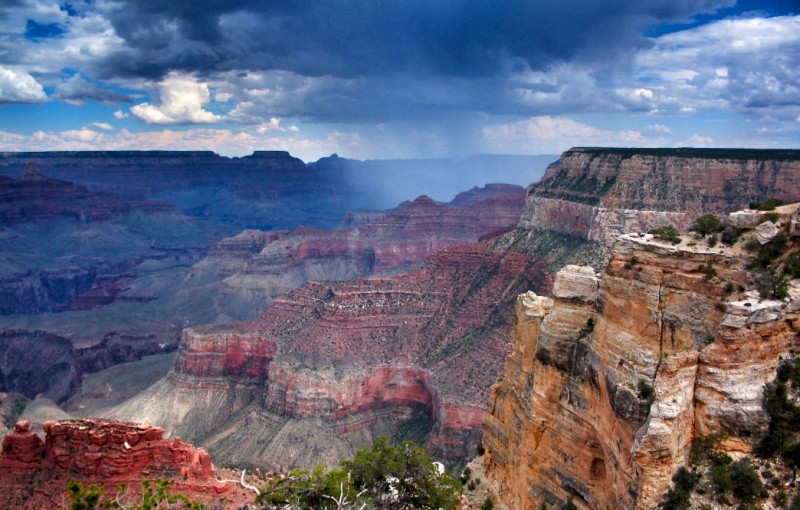
Where is the Grand Canyon Located?
The Grand Canyon is one of the most awe-inspiring natural wonders on Earth. Carved over millions of years by the Colorado River, this magnificent canyon stretches for approximately 277 miles and reaches depths of over a mile. Located in the United States, the Grand Canyon is a UNESCO World Heritage Site and attracts millions of visitors from around the globe each year.
Formation and Geology
The geological history of the Grand Canyon is an epic tale of erosion and natural forces. The canyon was formed through the relentless carving action of the Colorado River over millions of years. The river's powerful force gradually cut through layers of sedimentary rock, exposing nearly two billion years of the Earth's geological history.
Physical Characteristics
The Grand Canyon is a true giant, measuring up to 18 miles wide in some places. Its length stretches across the northern region of Arizona, and the canyon's depth reaches approximately 6,093 feet. The Colorado River continues to shape the canyon, ensuring that this natural marvel will remain ever-changing.
Location and Geography
The Grand Canyon is primarily located in the state of Arizona, United States. It is situated within the Grand Canyon National Park, which covers a vast area of approximately 1,900 square miles. The park's diverse landscape includes plateaus, cliffs, and side canyons, creating an extraordinary visual spectacle.
Grand Canyon National Park
In 1919, the Grand Canyon was designated as a national park, recognizing its unique beauty and significance. The park attracts millions of visitors each year, who come to witness the grandeur of this geological wonder. The establishment of the park ensures the preservation of this natural treasure for future generations.
Flora and Fauna
The Grand Canyon's varied habitats support a rich array of plant and animal life. From desert plants like cacti to wildlife such as bighorn sheep and California condors, the canyon is a haven for biodiversity. The delicate ecosystem within the canyon demands responsible and sustainable tourism.
Climate
Due to its considerable size, the Grand Canyon experiences diverse climatic conditions. Temperatures can vary significantly between the rim and the canyon's depths. Visitors should be prepared for extreme temperatures during different seasons, making it essential to plan accordingly.
Native American Connections
For thousands of years, the Grand Canyon has held profound cultural significance for Native American tribes, including the Havasupai, Hopi, Navajo, and Paiute. Many tribes consider the canyon sacred, and their traditional connections to the land are deeply intertwined with its geological formations and stories.
Tourism and Activities
The Grand Canyon offers a plethora of activities for visitors to immerse themselves in its grandeur. Hiking is one of the most popular pursuits, with trails catering to all skill levels. Additionally, rafting down the Colorado River provides a unique perspective of the canyon's beauty. Camping and stargazing opportunities also abound.
Challenges and Conservation
The Grand Canyon faces several challenges, including the impact of tourism on its fragile ecosystem and the risk of pollution from nearby urban centers. Conservation efforts are essential to preserve the canyon's natural beauty and protect the diverse wildlife that calls it home.
Interesting Facts
The Grand Canyon's unmatched beauty and geological significance make it a must-visit destination for nature enthusiasts and adventure seekers alike. As one of the world's most iconic landscapes, it continues to captivate the hearts of all who have the privilege to stand on its rim and gaze into its vast depths.
Where is the Great Barrier Reef Located?